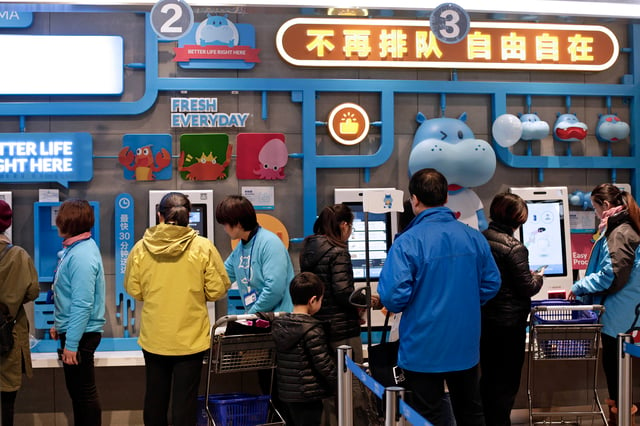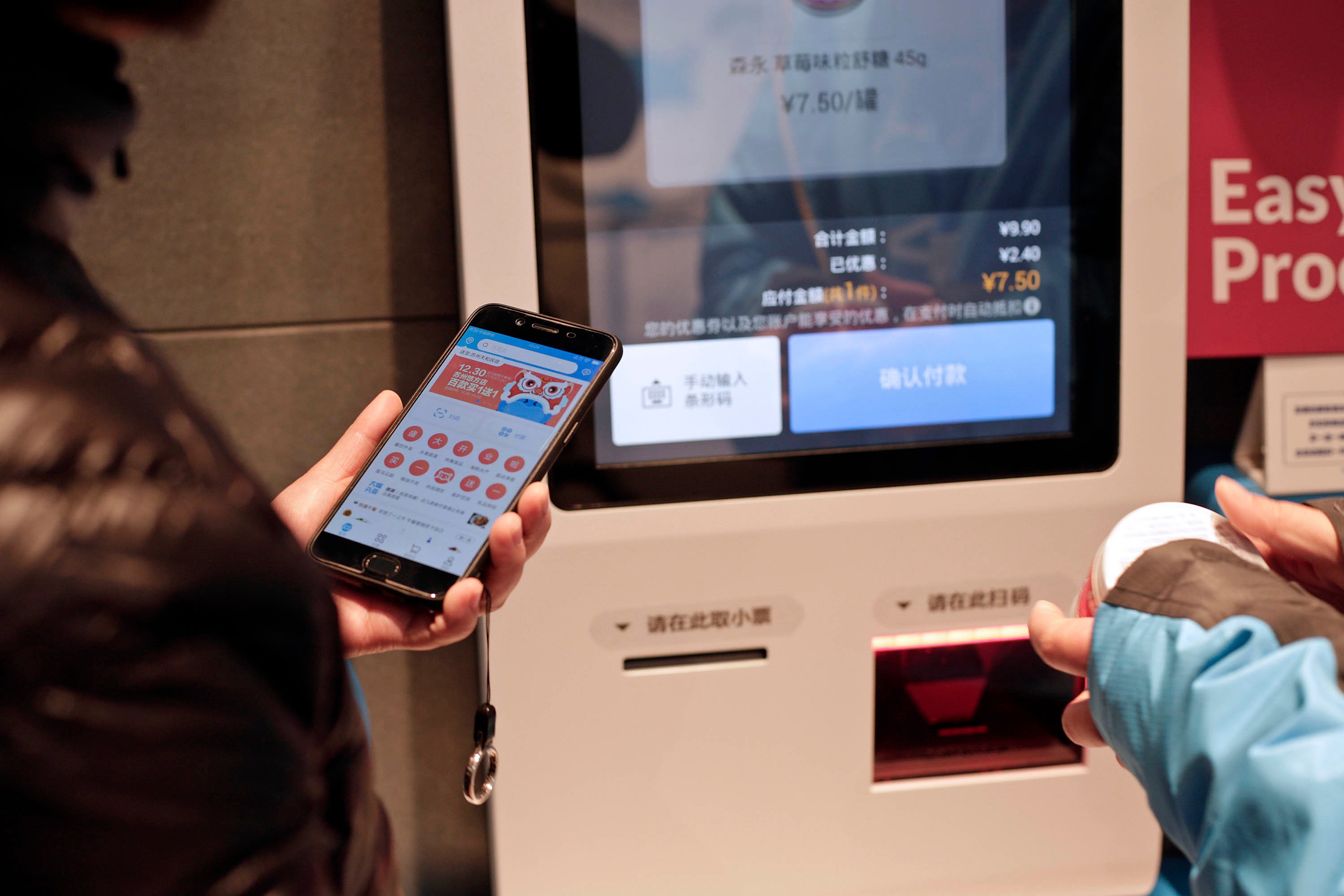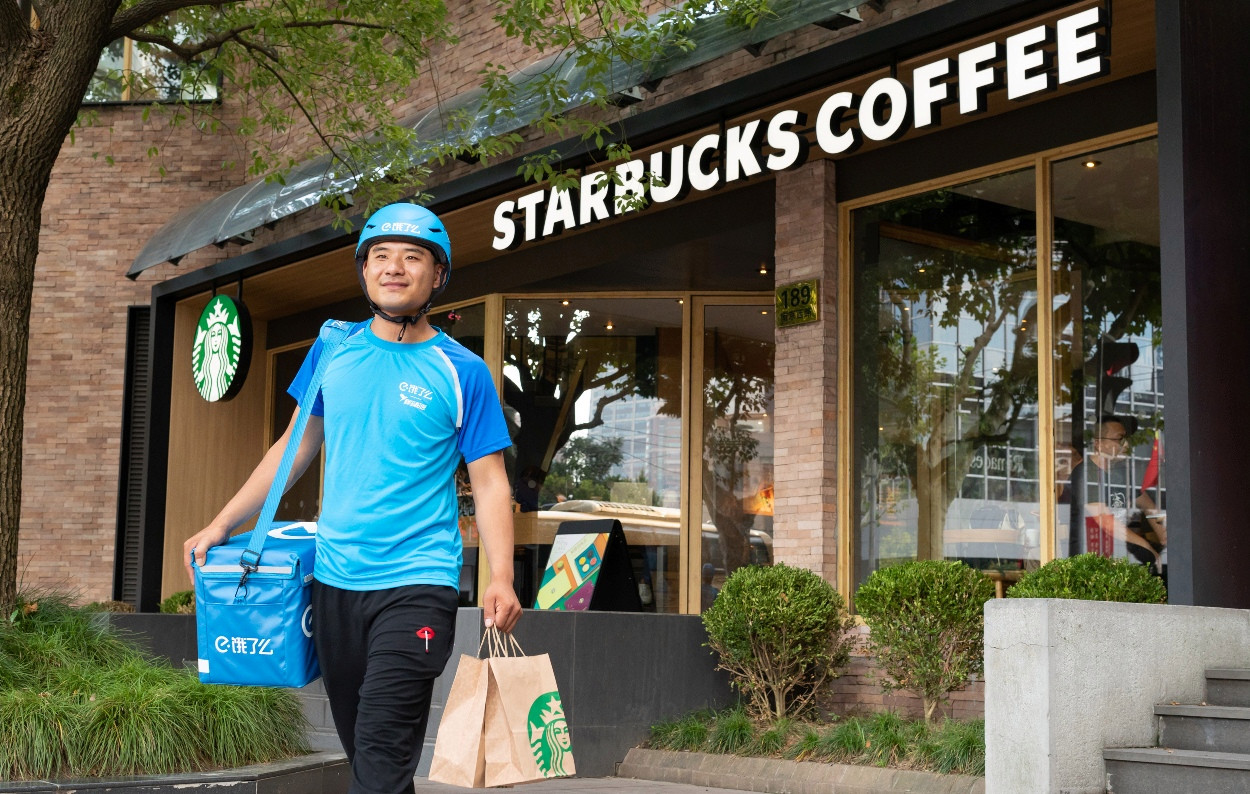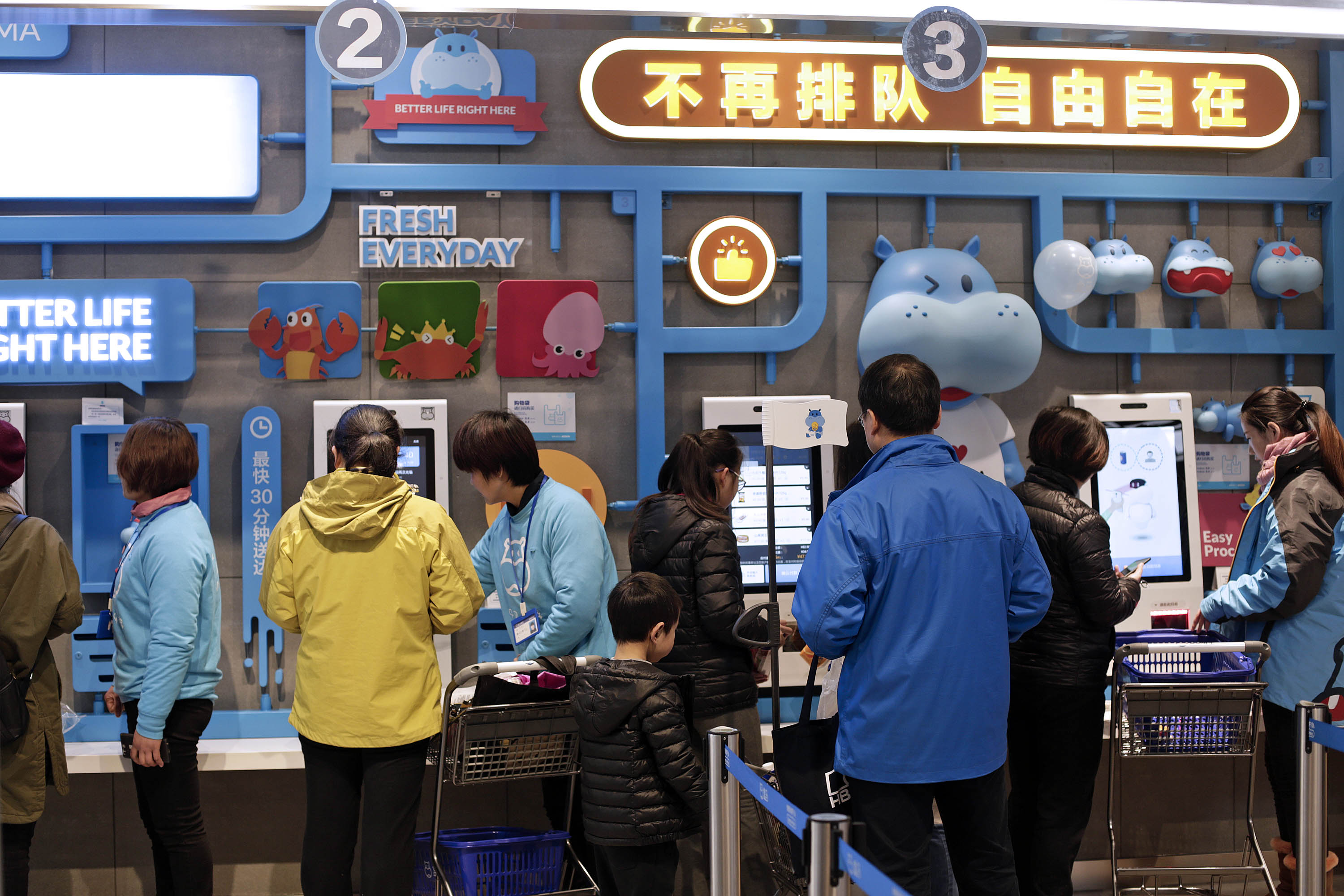Over the past few months, buzz has really been building around Chinese grocery store, Hema.
Reports from westerners who’ve visited Alibaba Group’s groundbreaking concept describe the experience as nothing short of jaw dropping.
Their fascination with the store is justified.
Released last week, the company’s Q2 earnings call revealed a 344% year over year revenue growth from its “New Retail” initiatives, of which Hema is an integral part of.
More than that, to many commentators, what the quickly blossoming supermarket chain represents is the next necessary step in retail’s evolution. Specifically, Hema provides a high resolution snapshot of the digitized store, likely to become commonplace in years to come. According to Erica Matthews, of Alibaba Group International Corporate Affairs, such a development would be vital in the push to harmonize online and offline shopping.
Speaking on behalf of Hema’s China-based team, she explained “you have to look at it from the way people shop.
“Consumers don’t shop in this world of offline versus online."
“They live their lives both on their phones and in-store and there will always be a place for physical retail. So why not make it more efficient and more of an experience?”
Perhaps even more striking is the fact the concept isn’t even all that new. While there’s a flurry of interest and attention circulating at the moment, the first Hema store opened in early 2016. Since then, Alibaba has been using the format as a living laboratory, piloting new initiatives with a determined zeal, and at an impressive rate. 57 Hema locations have popped up in 13 cities across the country in less than three years, with thousands more likely to appear in coming years.
Given the rapid rate of innovation in China, it’s worth wondering when the same kind of developments might start simmering in the US. Arousing further curiosity is exactly how western retail might achieve similar results.
What’s all the Fuss About?
Canvassing the many features of a standard Hema location is no simple task.
With an entirely digitized inventory, a customer’s mobile device essentially becomes the interface through which they interact with the store. Scanning a barcode not only produces detailed product information and recipe suggestions, but also informs customers exactly when that item was put on the shelf, as well as its origin. Wireless price tags convey dynamic pricing, while interactive displays at the end of aisles allow visitors to make purchase decisions based off live trends and buying behavior. As an example, consumers headed to a dinner party can look up the snack items currently most popular among those in their 30s.
 Being able to pick out your own live seafood is a major draw card for Hema customers.
Being able to pick out your own live seafood is a major draw card for Hema customers.
Live seafood areas are a prominent feature at all Hemas, enabling shoppers to pick out the exact food they want before having it cooked onsite, alongside any other items off the shelf. Meals can then be eaten at the in-store restaurant or prepared for takeaway or delivery.
Hema relies on Alibaba’s Alipay, while some locations also support facial recognition technology to facilitate even greater convenience at checkout. The ability to make sense of an overwhelming wealth of customer data makes every shopping journey a highly personalized affair, as different deals and product suggestions guide customers through a new, novel experience from visit to visit.
Perhaps one of the biggest draw cards of a Hema, however, is its capacity as a fulfillment center. Delivery is assured in as fast as half an hour if one lives inside a two-mile radius, transforming local stores into busy distribution points. Employing runners, orders are hand-picked throughout the store, bagged and hooked onto overhead conveyor belts before being placed on the back of a scooter and whisked away.
This last feature means a Hema customer can place an order on their phone when they leave the office, knowing the package will be on their doorstep by the time they get home.

The Seamless Shopping Encounter
What Alibaba has achieved with Hema is an entirely customer-driven and seamless grocery experience. Statistics demonstrate how the store successfully blurs the boundary usually drawn between online and offline encounters.
Roughly 50% of Hema’s total sales come from online orders, while some locations attract as much as 70%. At the same time, the average Hema customer visits their local store once a week.
“We wanted to see what would happen if we built a new retail experience from scratch, placing the consumer at the center of it and thinking about how to digitize everything to make it much better for them. Hema was the end result,” Matthews said.
As far as how popular Hema would prove among customers, Alibaba was completely unsure. In fact, the consequent success was practically a mistake, Matthews admitted, revealing “Hema was first developed as a concept, but has proven so popular, we’re seeing entire neighborhoods and ecosystems developing around locations.” So much so, property values surrounding locations have begun to rise as people relocate to within the 30-minute delivery zone.
 In-store staff members bag goods to fulfill online orders.
In-store staff members bag goods to fulfill online orders.
“It just goes to show that if you build things the way consumers want to shop and be served, you can create something very different from the status quo,” Matthews said.
Reshaping Buying Behavior With New Retail
While Alibaba was surprised at the positive response, the way the working parts of a Hema click together is far from dumb luck, but rather, a meticulously crafted formula.
That formula is what the company has coined “New Retail”.
“This isn’t about omnichannel or going ‘online to offline’. It goes way beyond that,” Matthews said, assuredly. “It’s not like a click and collect model, or trying to get customers to download your app for loyalty points. It’s complete digital integration across every step of the value chain so you have a truly seamless customer experience.
“Our ultimate vision, our goal, is to create the future infrastructure of all commerce.”
While much of western retail still attempts to zero in on falling foot traffic, and struggles for ways to marry a customer’s online habits with the in-store experience, Alibaba is already answering questions American retail hasn’t yet thought of.
For instance, Alibaba’s personalization capacity is so advanced, it seems to melt into the background as a minor feature when viewed amid the myriad advantages of a Hema. Coupled with the store’s high level of convenience, the once ecommerce-only giant is actively transforming the way Chinese customers see the act of shopping. In this way, Alibaba isn’t merely catering for an evolving customer — instead, it’s breeding entirely new expectations of what a trip to a physical store entails.
Recently, Director and CEO, Daniel Zhang, spoke at length on grand intentions to reshape the role of retail in society. Far from merely acquiring goods, heading to the grocery store will be a fun, entertaining and sociable activity.
“We are all online,” Zhang reasoned. “Our digital lives are a key component of offline retail. We need to find out how to digitize customer flow in the store, how to digitize the product listings, everything. If we digitize it all, we get a chance to redefine retail.”
 Alipay is available at all Hema checkout kiosks. Facial recognition tech is also being rolled out.
Alipay is available at all Hema checkout kiosks. Facial recognition tech is also being rolled out.
Built on Experimentation and Collaboration
Were it not for a relentless drive to test new ideas, Alibaba would never have even conceived of Hema in the first place. Such an attitude toward innovation often draws strong comparisons between Alibaba and Amazon, also known for its experimentation. But outside of this, similarities between the two are difficult to pin down.
Being what Zhang refers to as a “platform driven by data,” Alibaba’s biggest strength lies in its capacity for collaboration, seeing itself as an “enabler of the businesses” it partners with. While American retail tends to revolve around competition, arguably contributing somewhat to the current bloodletting of legacy brands, the Alibaba model appears to feed off a real openness and exchange with the aim of improving the industry at large.
That might sound like some PR spin lifted right from a press release, but there are real examples of such an approach in action. The most recent of which is the company’s partnership with Starbucks. Using Ele.me — the app Alibaba purchased this year to power its ultra-fast logistics operations at Hema — the coffee behemoth hopes to offer delivery at 2,000 of its China-based stores by the end of the year. There are also plans to establish as many as 600 “Starbucks Delivery Kitchens” at Hemas over coming years.
 The unprecedented Starbucks partnership will tackle the ambitious goal of coffee delivery.
The unprecedented Starbucks partnership will tackle the ambitious goal of coffee delivery.
“We’re doing a ton of these New Retail experiments and progress is happening faster in China,” Matthews suggested, “because there’s not this tension that exists between offline and online and also because of the positive relationship Alibaba has with brands.”
One of the main ways Alibaba’s retail partners benefit is through full access to online data insights. Unlike the Amazon model — which offers little room for retailer control — within the Alibaba framework, brands have complete ownership of their corner of the platform, right down to the design of their virtual storefront. Insights gained from customer interaction with their Alibaba site can then be applied in the development of offline encounters.
Also interesting to note is the way Alibaba is already exporting the Hema experience and implanting it within other retail environments. The hypermarket chain, RT-Mart — which the company has a stake in, — already boasts 200 stores with the same conveyor belt system Hema uses to help fulfill online orders.
“We’re showing that you don’t actually have to build this from scratch and already it’s possible to see that these things can be applied to existing retailers,” Matthews said.
The Growth Ahead
With developments like these already well underway, it’s possible to imagine a near future when New Retail initiatives can be rolled out at scale. Much more difficult to predict is how far Alibaba’s influence and reach can spread.
Alibaba Group has 576 million annual active users, with that number growing each quarter. According to the company’s VP, North America, Lee McCabe, by next year, 57% of all online purchases will be made in China, which will be home to close to a third of the world’s population of ecommerce shoppers. Meanwhile, with online only accounting for around 20% of the country’s retail earnings, the amount of growth Alibaba has ahead of it is mind boggling.
“The most important thing for Alibaba is globalization,” Zhang said. “We don’t think of Alibaba as a Chinese company. We are a company born in China, but belong to the world.”
“In 20 years, we want to serve two billion people."
“Because of the internet, we have the power to make this happen.”
What’s going on in American and Chinese retail is not an apples and oranges comparison. It’s more like the equivalent of sipping mai tais on a cruise ship in the Caribbean, while trying to imagine building a holiday home on Pluto. The two are too different to be able to pit against one another. However, what’s clear to comprehend is the different mentality between east and west.
While there are certainly promising developments, nothing in the US comes close to what’s been happening in China for some time. With a solid foundational network and so much room for growth, exponential enhancements in tech are sure to propel Alibaba’s endeavors along at light speed.
With Hema, the company is demonstrating what’s possible with full-scale digitization, offering an extremely positive sneak peek at the industry’s future. Alibaba certainly has a head start in creating this future, but as their next generation supermarket proves, innovation can happen quickly. If American retail really wants a revolution akin to what’s about to boil over in China, all that’s needed is decisive action.
Join us at RetailSpaces to explore the future of brick-and-mortar.

Posted by
Physical Retail Reimagined.
RetailSpaces is a community for store development and design innovators.
March 29-31, 2026 | San Antonio, TX
Learn More!








Comments